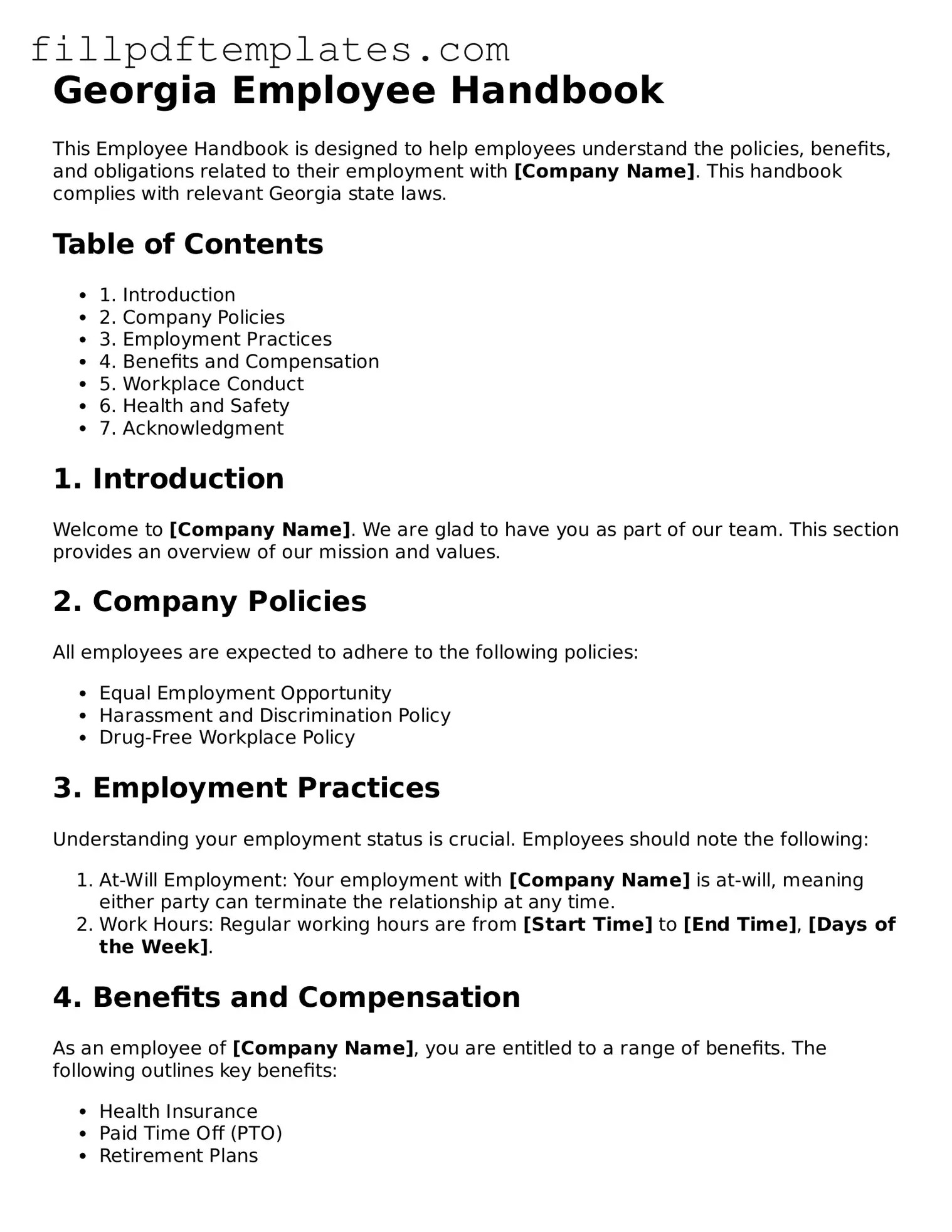Georgia Employee Handbook
This Employee Handbook is designed to help employees understand the policies, benefits, and obligations related to their employment with [Company Name]. This handbook complies with relevant Georgia state laws.
Table of Contents
- 1. Introduction
- 2. Company Policies
- 3. Employment Practices
- 4. Benefits and Compensation
- 5. Workplace Conduct
- 6. Health and Safety
- 7. Acknowledgment
1. Introduction
Welcome to [Company Name]. We are glad to have you as part of our team. This section provides an overview of our mission and values.
2. Company Policies
All employees are expected to adhere to the following policies:
- Equal Employment Opportunity
- Harassment and Discrimination Policy
- Drug-Free Workplace Policy
3. Employment Practices
Understanding your employment status is crucial. Employees should note the following:
- At-Will Employment: Your employment with [Company Name] is at-will, meaning either party can terminate the relationship at any time.
- Work Hours: Regular working hours are from [Start Time] to [End Time], [Days of the Week].
4. Benefits and Compensation
As an employee of [Company Name], you are entitled to a range of benefits. The following outlines key benefits:
- Health Insurance
- Paid Time Off (PTO)
- Retirement Plans
5. Workplace Conduct
Maintaining a positive work environment is important for all employees. Adherence to the following expectations is required:
- Respectful Communication: All employees should communicate respectfully with colleagues and management.
- Punctuality: Employees are expected to arrive on time for their shifts.
6. Health and Safety
The safety of our employees is paramount. Each employee must comply with the following safety protocols:
- Report Safety Hazards: Employees should immediately report any unsafe conditions.
- Follow Safety Procedures: All employees are required to adhere to established safety procedures.
7. Acknowledgment
By signing this section, you confirm that you have received and understood this Employee Handbook:
Name: [Employee Name]
Signature: [Employee Signature]
Date: [Date]
